
- Accueil
- Certification
- Département
- Matériel
- Métal
- Métal De Base
- Style
- Antique (5)
- Art Deco (9)
- Beaded (178)
- Beaded, Pendant (8)
- Beaded, Statement (5)
- Chain (8)
- Choker (6)
- Collier (12)
- Drop / Dangle (7)
- Islamic (6)
- Mid-century Modern (7)
- Necklace (5)
- Oversized (6)
- Pendant (91)
- Pendentif (7)
- Perles (43)
- Perles, Déclaration (5)
- Perlé (52)
- Strand / String (69)
- Vintage (10)
- Autre (1666)
Sculpture ancienne rare et exquise en cornaline représentant l'oiseau Phoenix

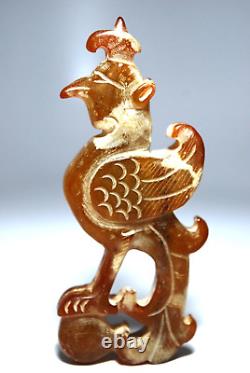


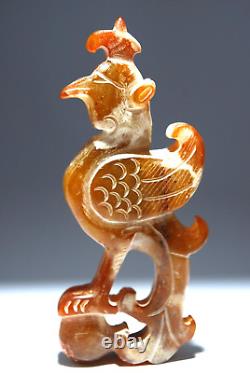
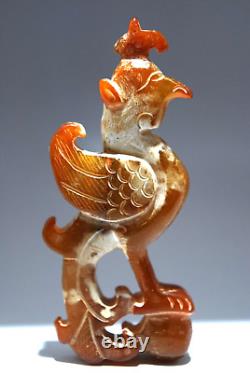
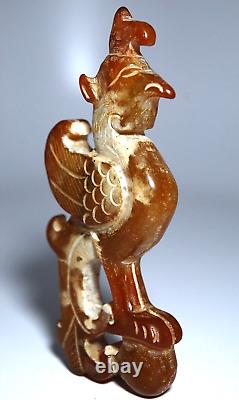
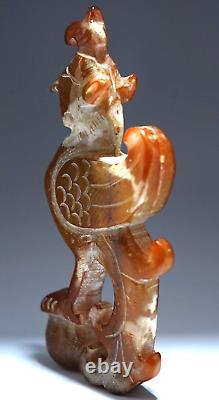
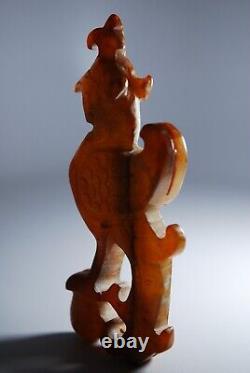
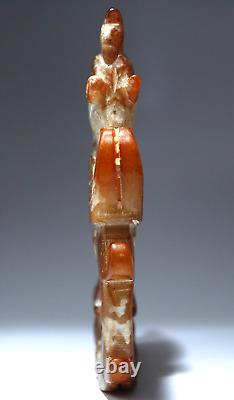

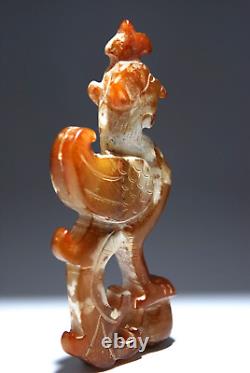
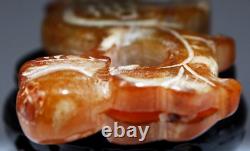

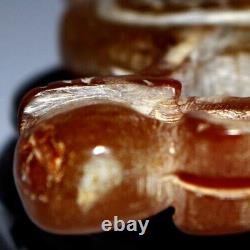


Rare and Exquisite Old Carnelian Carving of the Phoenix Bird. This is a rare and exquisite carnelian carving of the Phoenix bird, the symbol of immortality and rebirth in Chinese culture. It is an antique Chinese piece that dates back to the older dynasties, when carnelian and other precious and semi-precious stones were used to adorn the head-dresses of the nobility and royalty. The carving is very detailed and realistic, with the Phoenix's feathers, eyes, beak, and claws clearly visible. The carving also has mineral deposits encrusted within it, adding to its charm and authenticity. The piece has two grooves on the back and on the bottom, where it was attached to other elaborate carvings to form a magnificent head ornament.
There are still traces of the original materials that it was connected to in the grooves. The carnelian stone has a beautiful brown red color and is translucent when held against the light.
It comes from an important collection of a jade connoisseur who acquired it from a reputable source. The piece has a small area on the round bottom that has an old wax repair and appears a shade darker in this area. This does not affect its value or beauty, but rather adds to its history and character. The piece measures 4 & 3/8" inches (11.0 cm) in height, 2 inches (5.0 cm) wide and 5/8" inches (1.7 cm) in thickness. This fairly large piece weighs 2.9 oz (81.6 grams).
It is a rare and valuable piece of Chinese art and history that would make a great addition to any collection or a wonderful gift for someone special. These stones were believed to have various powers and meanings, such as warding off evil, enhancing luck, or expressing status and wealth. Some of the most common stones used were jade, coral, pearl, turquoise, amber, agate, carnelian, crystal, and amethyst. They were often carved into various shapes, such as flowers, animals, birds, dragons, or human figures, and combined with gold, silver, or bronze fittings to create elaborate head ornaments. These ornaments were worn by both men and women of the upper classes, especially during ceremonies, festivals, or weddings. They were also used as symbols of rank or affiliation, such as by officials, scholars, or members of different ethnic groups. The head ornaments were often passed down as heirlooms or given as gifts to show respect or affection.
